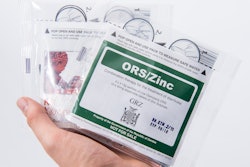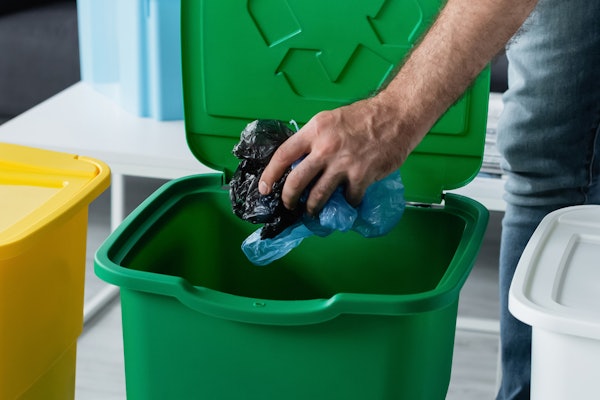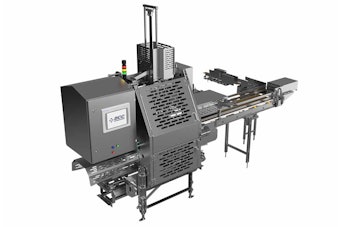
A recent study investigating the potential degradation of three widely used prescription drugs points to a significant risk of physical degradation during normal patient use when packaged in conventional pharmacy formats. The report, published by the Healthcare Compliance Packaging Council (HCPC), points to the adverse effects daily exposure to oxygen and moisture may have on non-coated tablets of Simvastatin (for high cholesterol), Lisinopril (for high blood pressure/hypertension) and Metformin (for Type 2 Diabetes) when contained in multi-dose containers, such as traditional amber pharmacy vials and plastic bottles requiring repeated opening and closing, or low-barrier blister films that permit permeation.
The findings of the HCPC study support the longstanding theory that exposure to moisture and oxygen increases the risk of tablets’ physical degradation, even under normal usage conditions. The results also showcase how the composition of tablet packaging can determine the medication’s likelihood of degrading. Specifically, polypropylene vials, high-density polyethylene (HDPE) bottles and polyvinyl chloride (PVC) blisters, all of which are found in traditional retail and institutional pharmacy settings, may increase tablets’ risk for higher physical degradation when compared to high-barrier single-dose packages such as PVC/Aclar® or PVC/polyvinylidene chloride (PVdC) blisters.
From humid bathrooms to hot mailboxes...what are the impacts?
The study was designed to compare how a prescription’s dosing duration (in combination with increased environmental exposure) could impact the drug’s physical degradation. To accomplish this, all vials, bottles and blisters were tested using 30-, 60-, and 90-day fills. Here, researchers focused on the physical degradation that occurs during the prescribed in-use period by assessing changes to the drug in moisture gain, tablet hardness, and disintegration time.
It was found that degradation increased when tablets were tested in higher humidity (90% relative humidity, or RH, at 25°C)—conditions intended to simulate a typical bathroom environment—versus those tested in 75%RH at the same 25°C temperature. In addition, when subjected to relatively hot conditions (40°C/104°F at 75%RH), temperature sensitivity was observed in all three drugs. This calls into question the practice of mail order prescription delivery, especially during the summer months, when some prescriptions can sit in hot trucks or mailboxes for hours or even days.
The degradation observed under these various conditions indicates that Simvastatin, Lisinopril and Metformin, when dispensed in polypropylene amber vials, HDPE bottles or PVC blisters, undergo physical changes through daily exposure to typical home environments. Whether these changes affect these drugs’ specific efficacy or medicinal absorption rates requires further investigation.
Further study needed to ensure product integrity
Walt Berghahn, HCPC Executive Director, says, “The unique outcomes seen with these three products indicate how little is known about the impact of patient at-home storage conditions on the quality of the $320 billion of drugs that are dispensed annually. Regardless of the drug form, all medicines need to be protected through distribution and pharmacy until used by patients. We welcome further research on in-use stability by other organizations concerned with patient safety, not only for the three drugs we studied but for the thousands of pharmaceutical products used and trusted by patients each day.”
Berghahn continues, “Packages need to protect pharmaceutical products during their entire life cycle. As shown in this study, single-dose packages using high-barrier materials can accomplish that goal so long as the temperature profile is maintained. Once we move closer to protecting these products appropriately, we help ensure that patients receive effective products.”
The HCPC notes that the results of this study are not intended to challenge pharmaceutical manufacturers’ stability criteria for primary bulk packages that do not reach patients, nor state that the products failed in any way. However, the data does indicate that current prescription packaging does not protect the physical characteristics of these three products during normal use. Through this study, the HCPC intends to bring awareness to packaging’s potential impact on drug products’ efficacy in conjunction with the environment in which medicines are stored.”
Initial conclusion
The study leads to the initial conclusion that U.S. patients taking medications from non-barrier packaging may not get the designed clinical benefit of the drug due to potential product compromise from daily exposure to the home environment. The HCPC sees the next step as broadening the scope of research to include chemical assay tests on drugs exposed to these or similar study conditions, with a goal of determining potential efficacy impact.
The full HCPC Prescription Packaging-In-Use Stability Study can be found on the organization’s website, www.hcpconline.org.
The Healthcare Compliance Packaging Council (HCPC) has offered its members a voice in pharmaceutical packaging issues and the opportunity to help promote the many benefits of patient compliance packaging. From suppliers of pharmaceutical packaging components, to machinery manufacturers, to contract packagers, to industry consultants and experts, the organization’s members share the mission of promoting broader adoption of compliance-prompting packaging to improve patient outcomes. HCPC also hosts an annual conference, RxAdherence, focused on improving patient adherence. This year’s event takes place in Florham Park, NJ on March 31, 2015 (see www.rxadherenceconference.com).


























